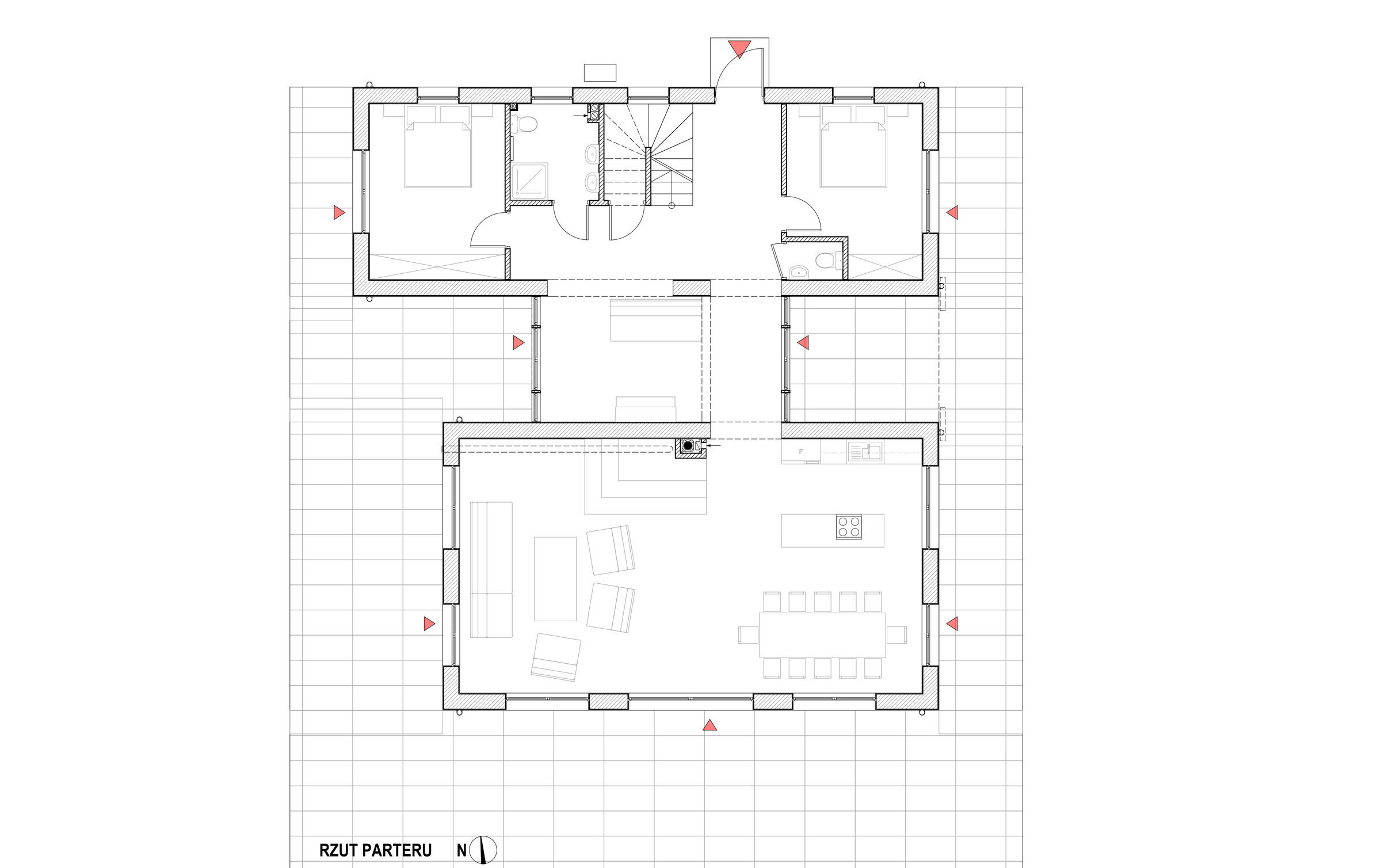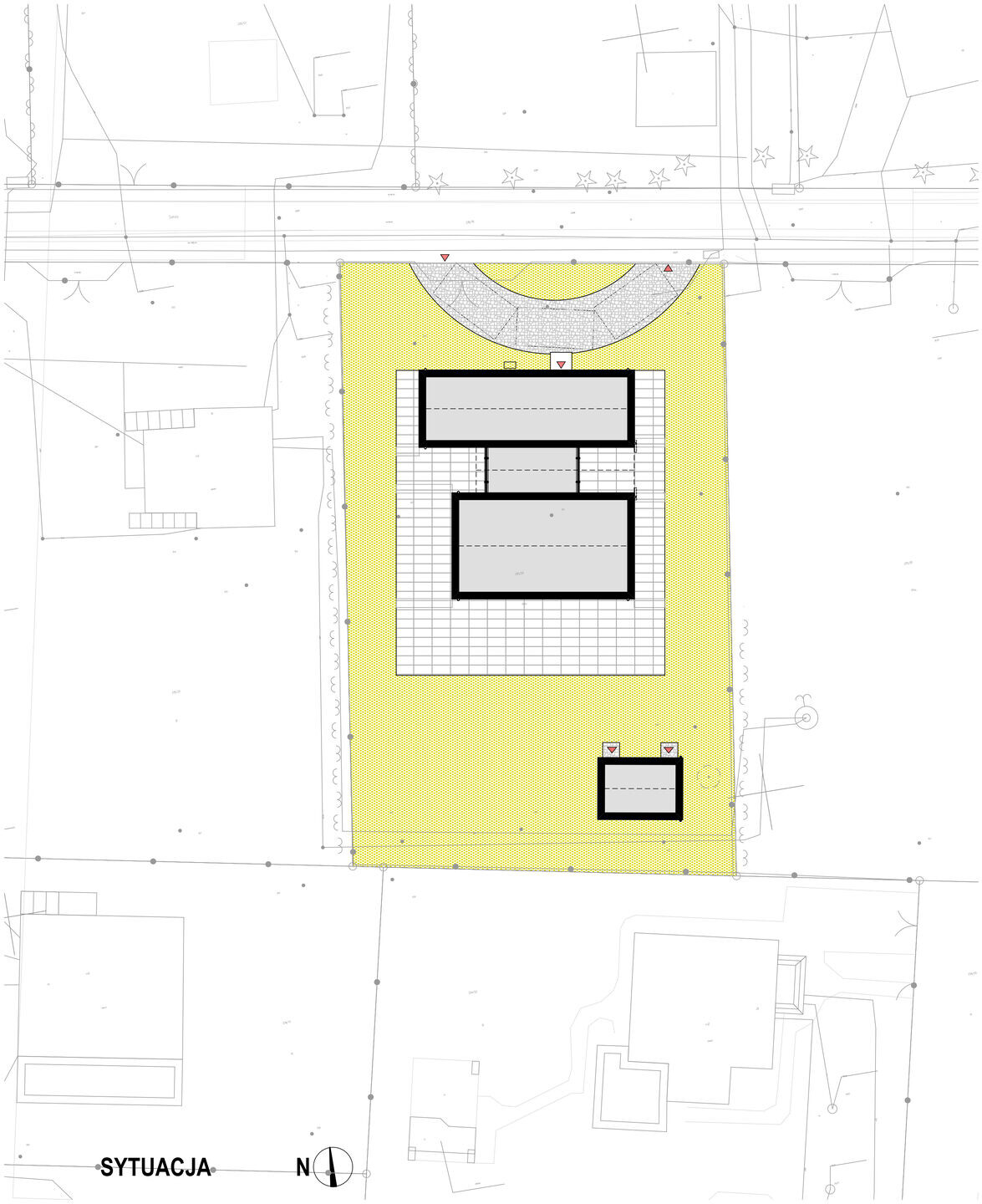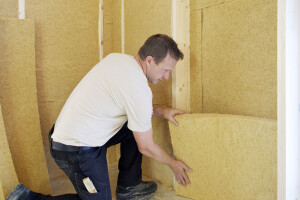The house is located on a medium-sized plot of land, in a quiet street built up with single-family and summer houses in Wisełka. The plot is located on the edge of the Wolin National Park, 1.4 km from the Baltic Sea and about 2 km from the center of Wisełka. More popular Międzyzdroje is 12 kilometers drive to the west from there. The house is separated from the beach by a beautiful, species-rich and hilly mixed forest (pine and beech), where berries and mushrooms grow. Thanks to this, the very way to the sea (on foot or by bicycle) is a pleasure, as is the wide, sandy, quiet and peaceful beach on the Baltic Sea and the cliff that forms its natural border from the south. The Baltic Sea without a promenade and its hustle and bustle, a tall mixed forest along the way, no cars near the beach, and silence are significant advantages of the location.
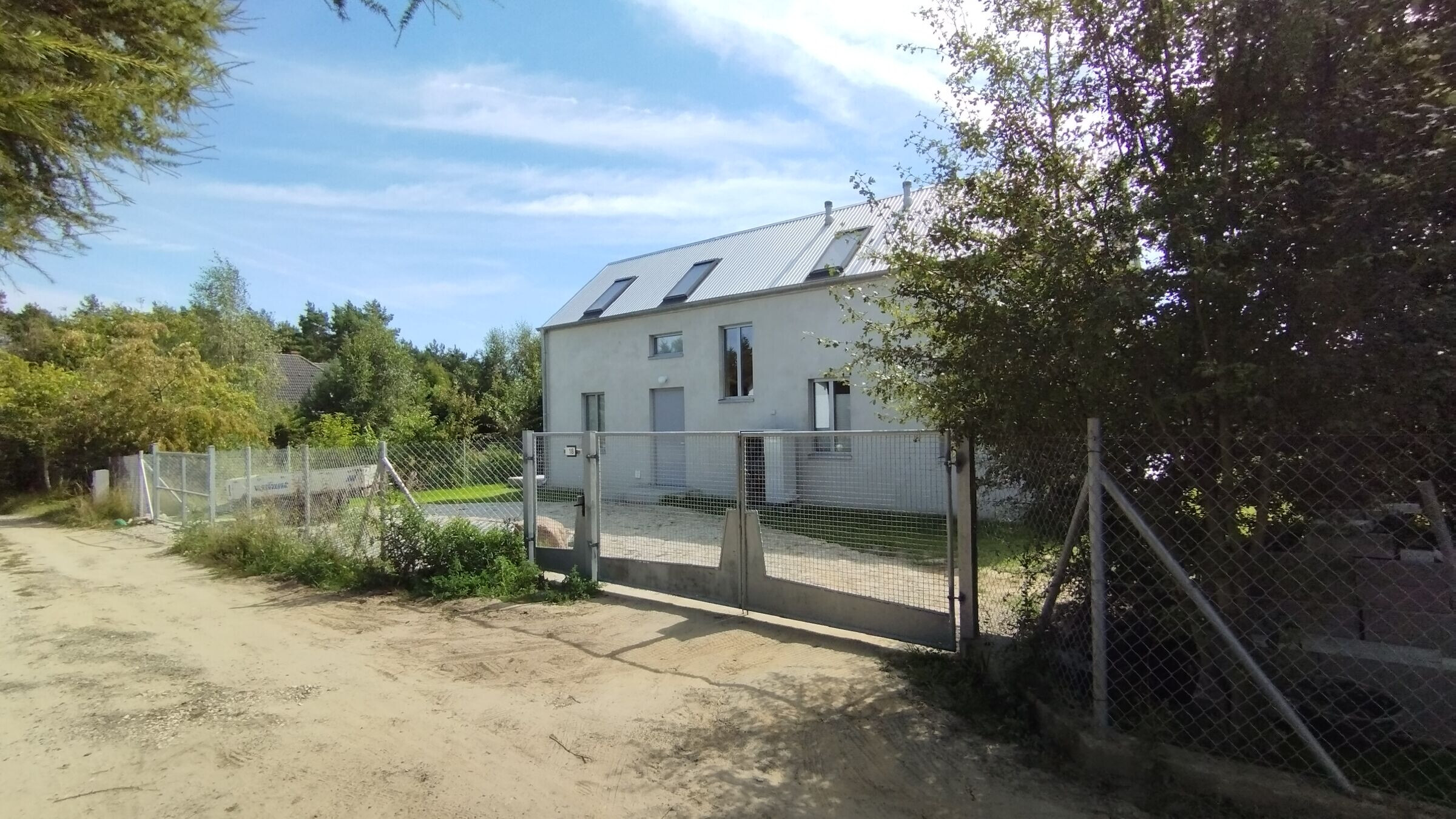
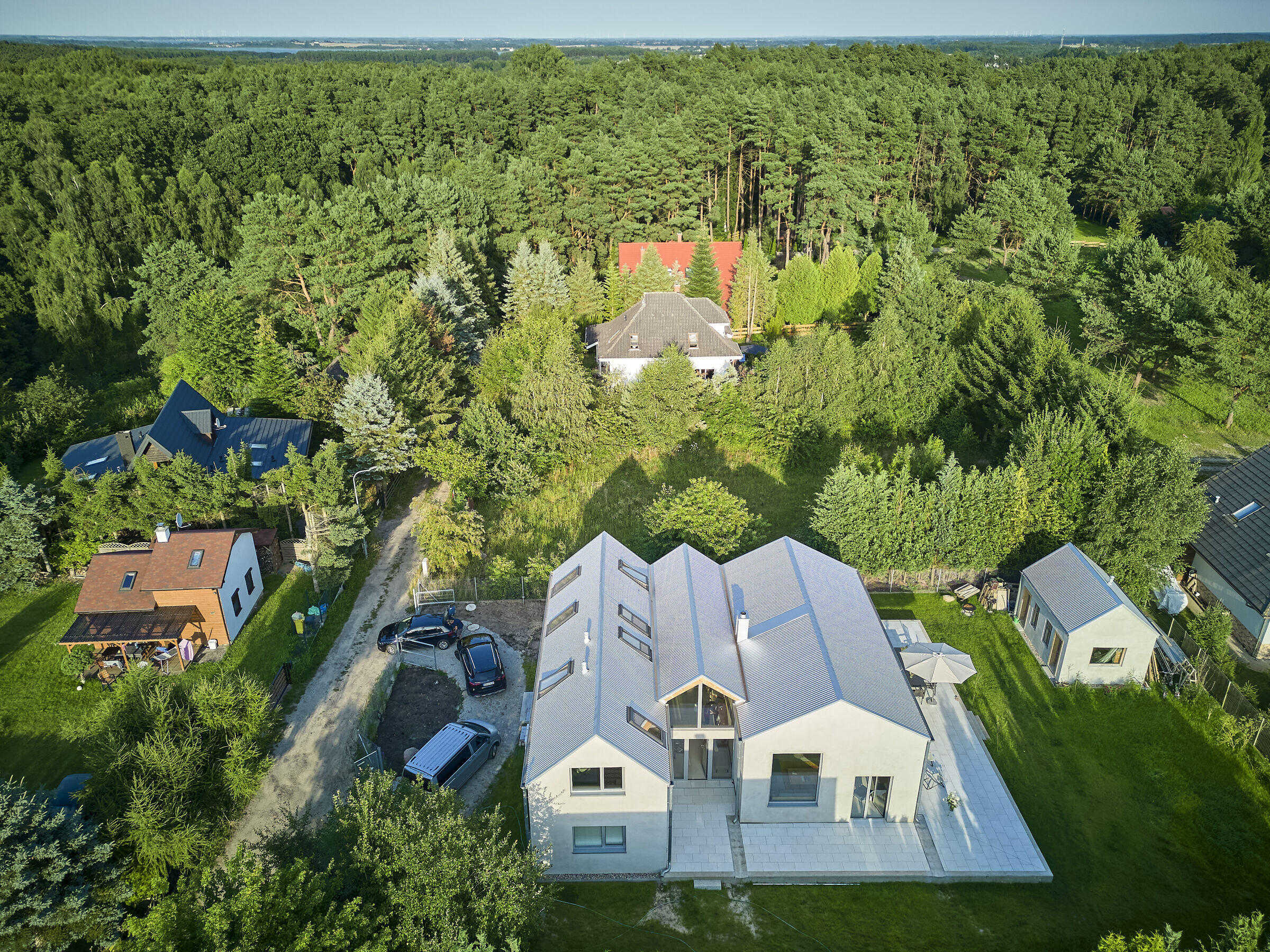
The clients were delighted with the charm of Wiselka and wanted to build their second home here. On a daily basis, they live in a small town in eastern Germany. This seaside base is intended to serve them as a vacation home ideal for relaxation, celebration but also work, concentration and tranquility. When they are not using it themselves, they will make their residence available to others as a short-term rental. The place offers a harmonious blend of spacious, open spaces for family and friends, as well as rooms for work and retreat. This balance makes the house suitable for both social gatherings and quiet, uninterrupted moments. The building consists of two main parts: ‘day house’ and ‘night house,’ which are connected by a wide, glazed transition area. The day activity rooms and bedrooms are separated from each other. This allows for seclusion in the night zone when many people are together in the day zone.
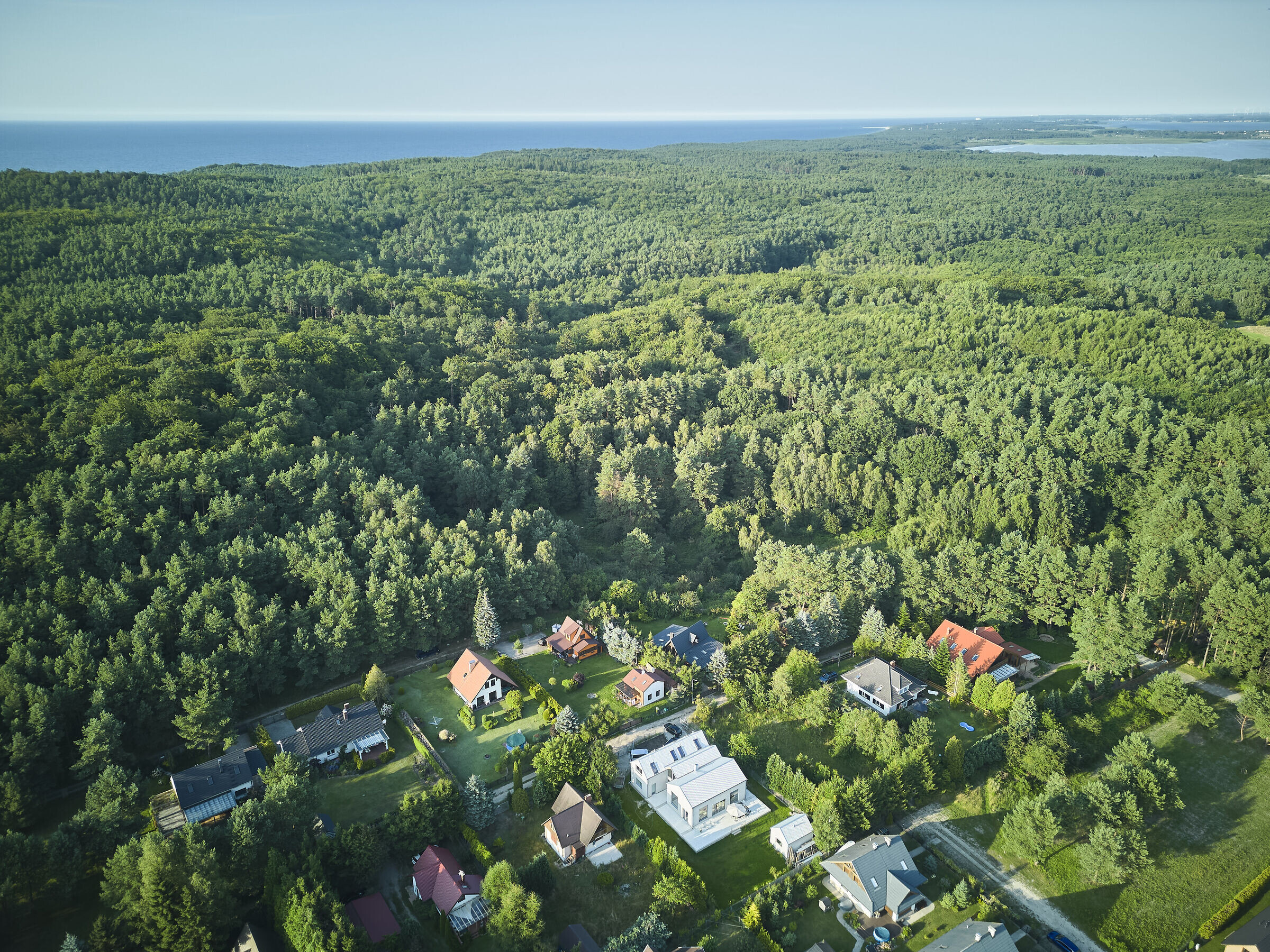
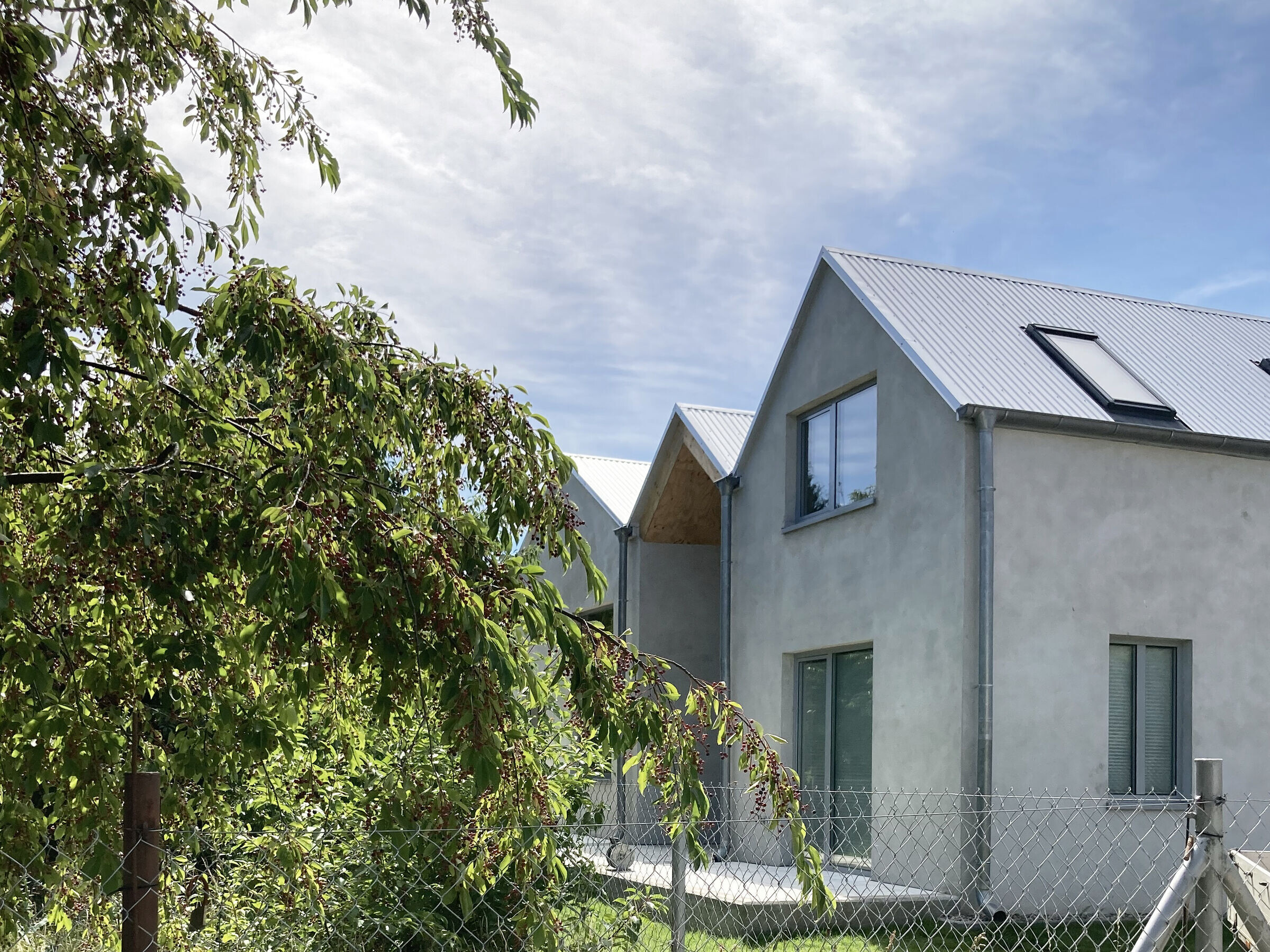
Formally, the building consists of three simple volumes, covered with gable roofs with various slope angles. The roof ridges are parallel to the front of the plot. Dividing the mass of the building allowed for the ridges to be located 2 meters below the maximum height determined by the planning regulations, thanks to which the house has an intimate scale. This division into three volumes is reflected in the functional layout - a two-story ‘night house’, with an anonymous street façade, with small openings, and an extravert ‘day house’, with large windows opening it to the garden, and a glazed volume between them.
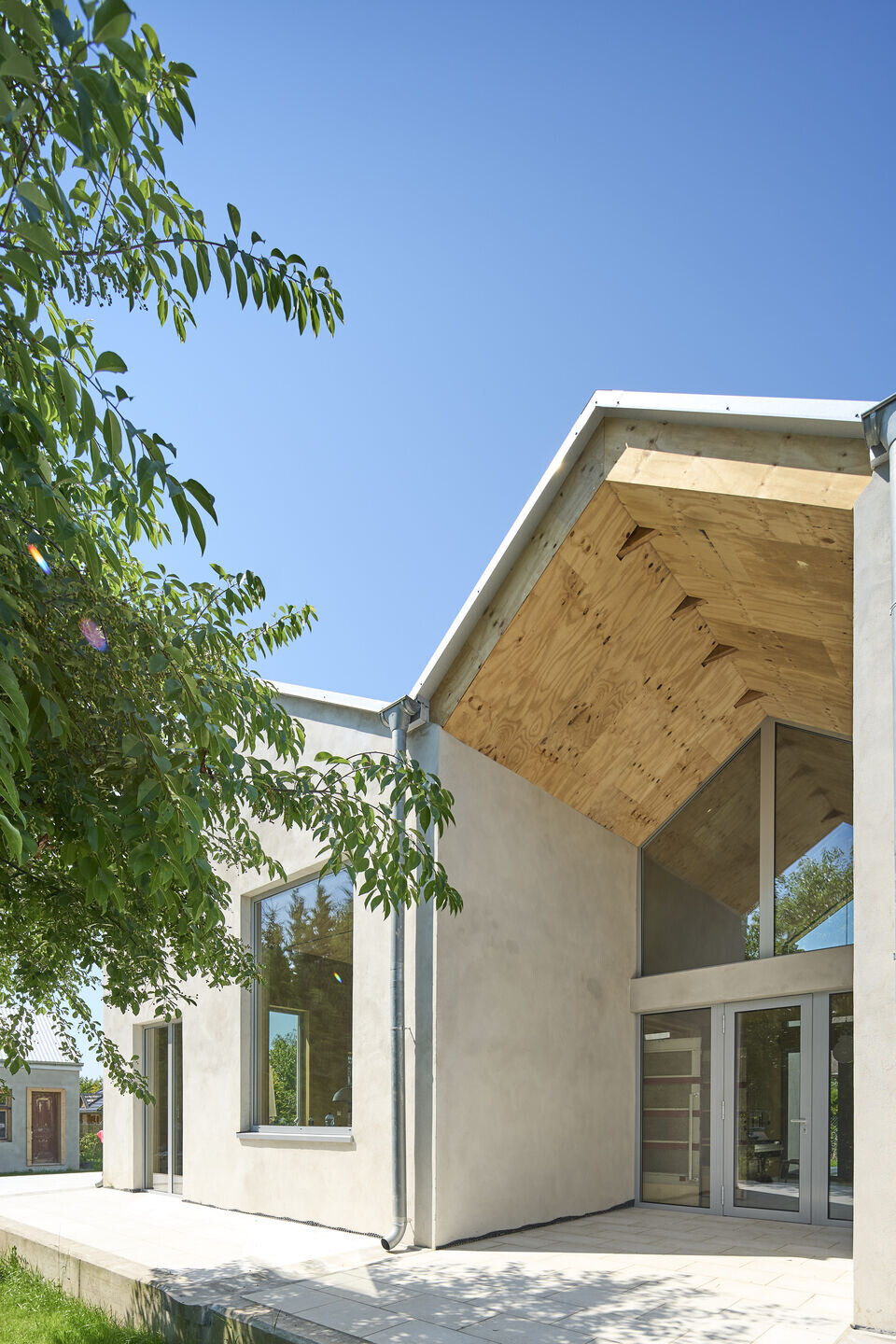

The ‘day house’ consists of a single, large room. Its height reaches more than 6 meters. This room has large windows in the three outer walls, allowing for a view of the surrounding garden and sky. As a result, the living room is well lit by natural light at all times of the day. The ‘day house’ has a living room area with a spacious sofa, a large dining room with an antique Berlin table, and a modern kitchen with built-ins made of plywood. The induction stove is built into the kitchen island, which can be easily reached from all sides. The heart of the living area is a large clay stove, on which you can sit or lie down at any time of the year. On cold days, you can fire up the stove and enjoy its pleasant, radiant warmth. Three glazed doors lead from the room to a large surrounding terrace and on to the garden. An old swinging door from 1930s (from the Jewish Girls' School on Berlin's Auguststrasse - the homeowner's acquisition from an eBay auction) connects the living area with a glazed transition zone, which is also connected to the terrace on both sides. This room is furnished with a piano and a comfortable sofa.
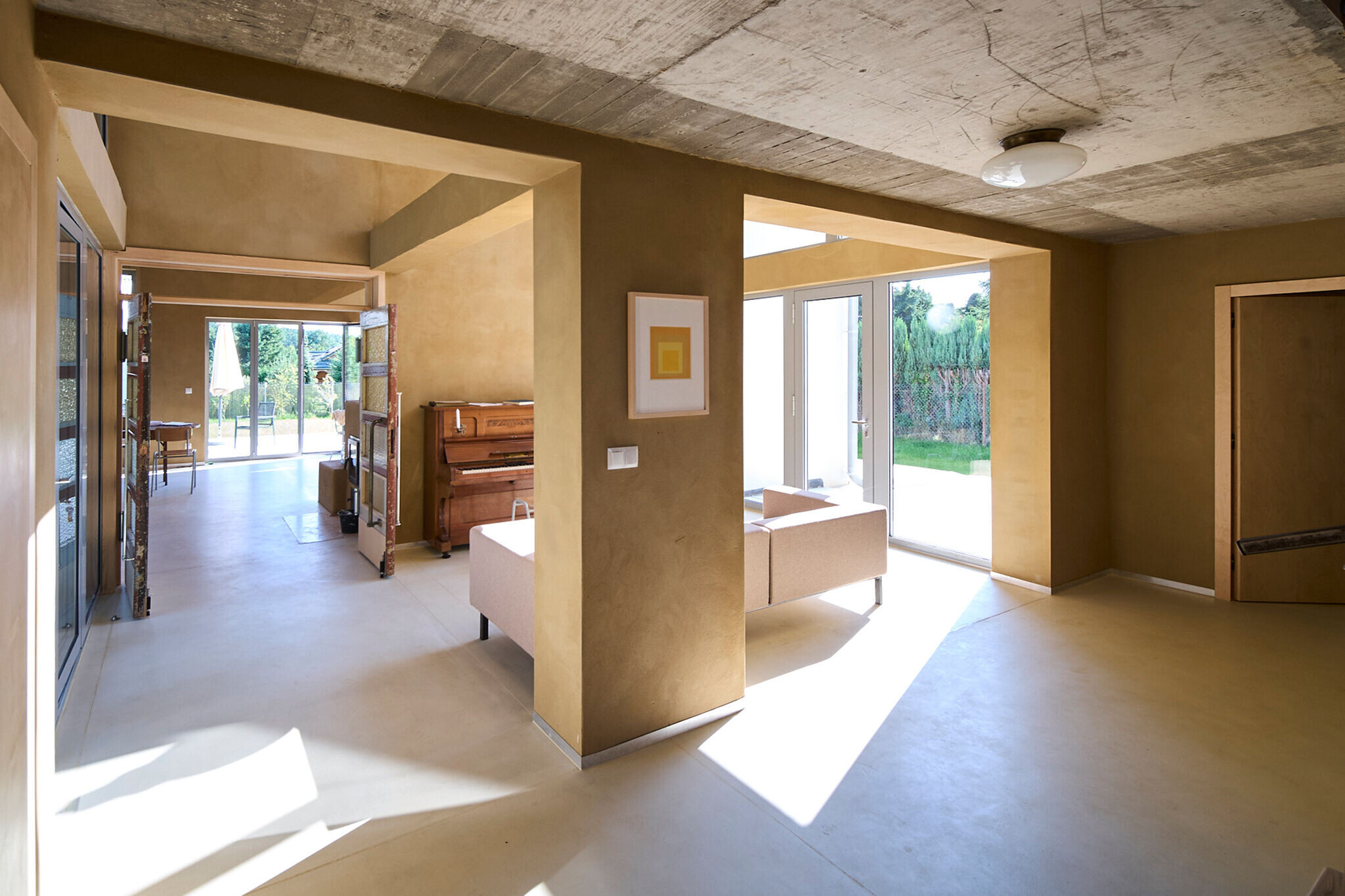
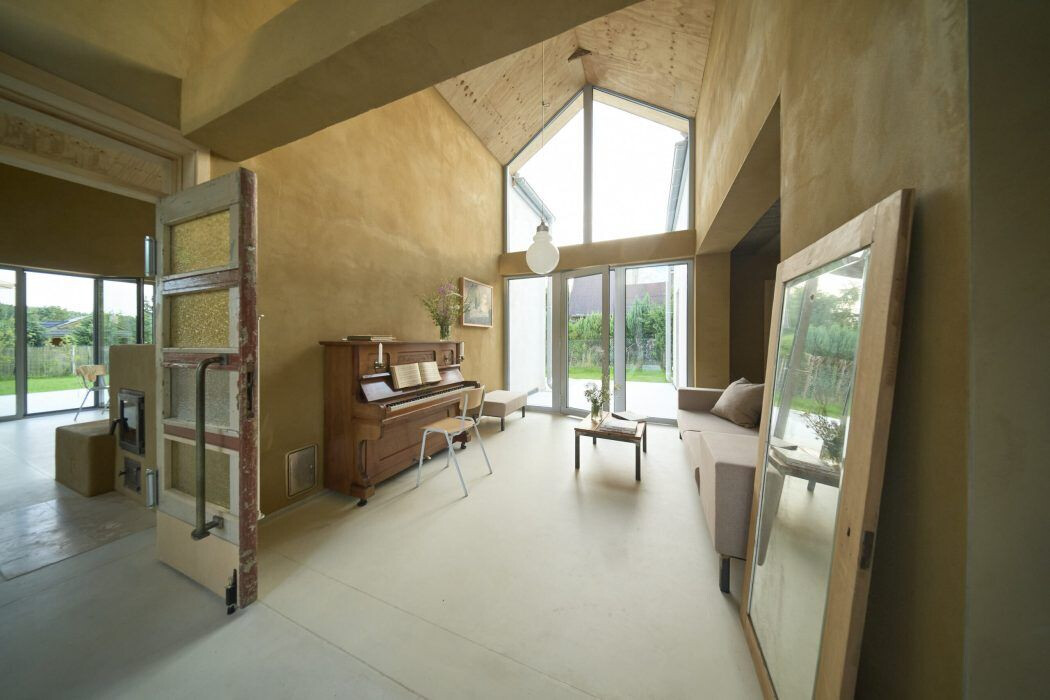
The ‘night house’ has two levels. On the ground floor there are two bedrooms with access to their own parts of the terrace, a bathroom and an additional toilet. The ground floor and attic are connected with a wide, wood-clad staircase, lit naturally through a window in the front wall and a skylight. The attic has three bedrooms - two larger, one smaller - and a bathroom. These rooms have walls finished with clay plaster and a slanted ceiling finished with plywood, which gives them a cozy, warm atmosphere. The calm mood of the interiors is complemented by modest furnishings.
The house is surrounded on three sides by a bright terrazzo slab terrace. Recreational garden has a fireplace and a small house for sauna. Sauna has wooden windows and doors, which are recycled. A curved driveway paved with fieldstones in front of the house provides parking place for three cars.
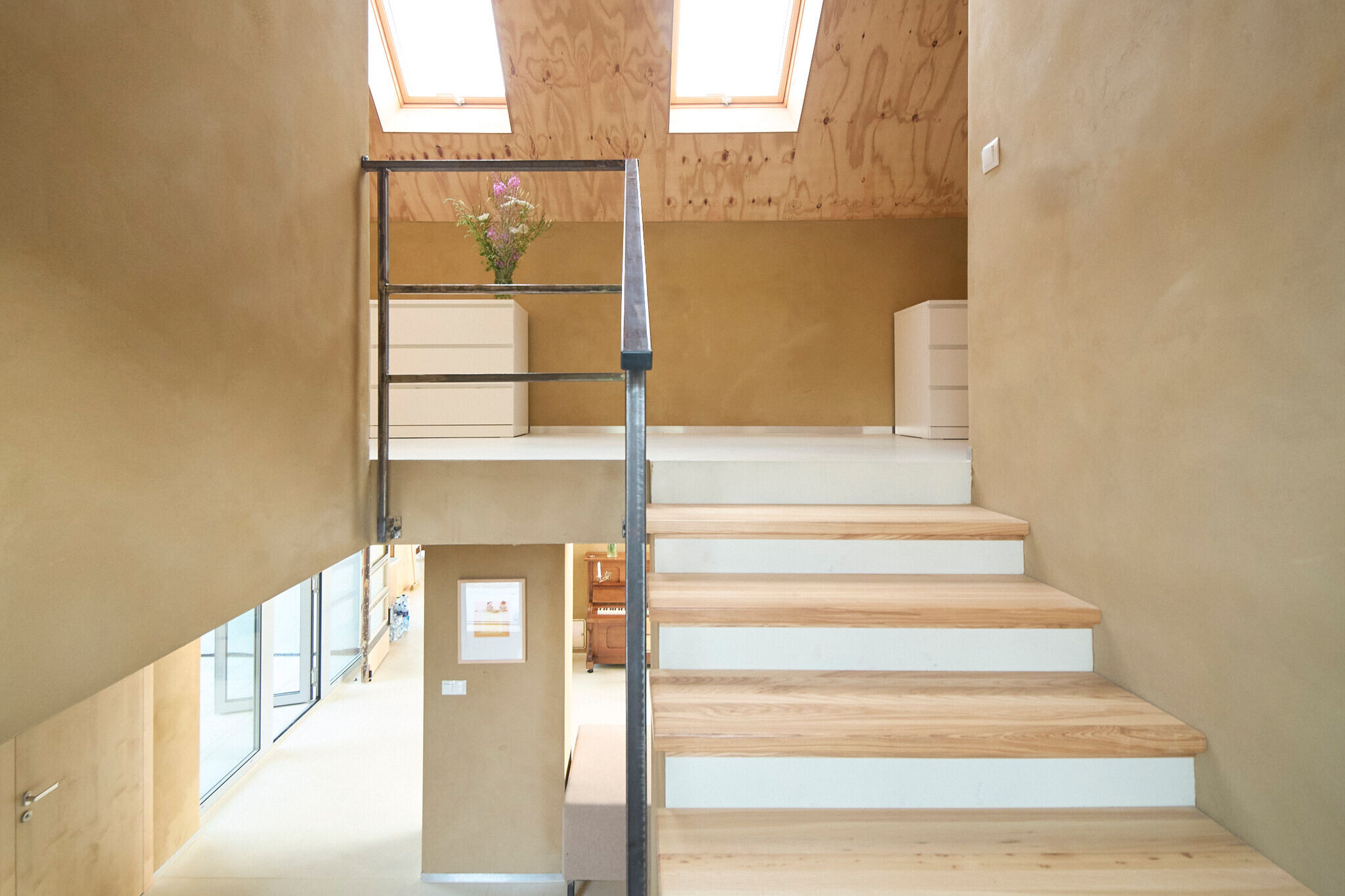
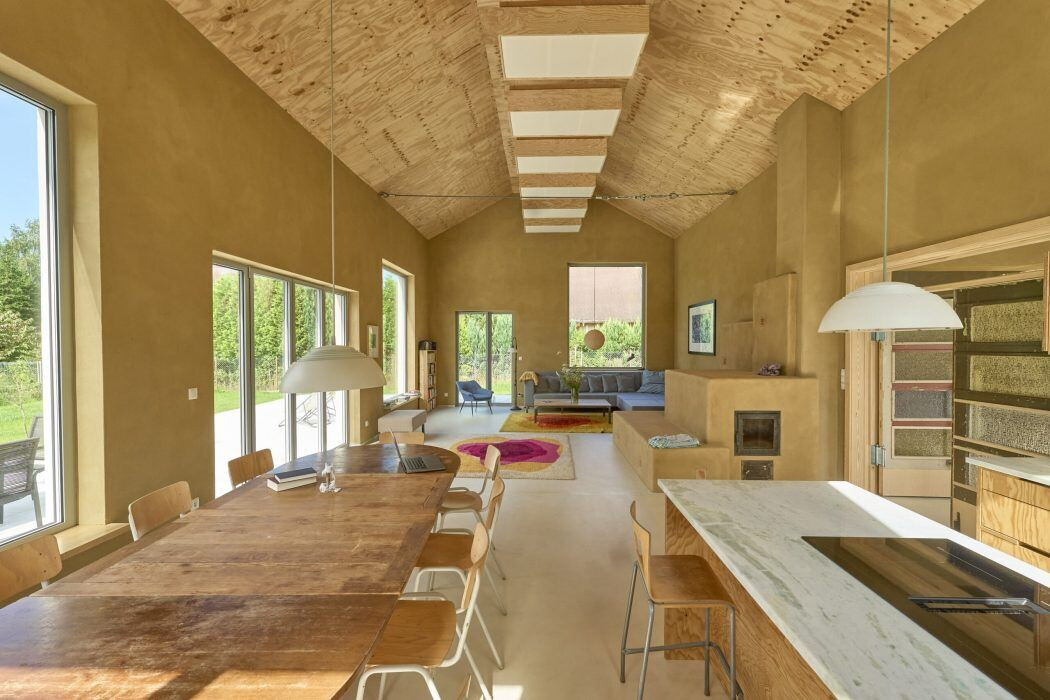
The house in Wiselka was designed in close collaboration with the client. Interiors were decorated and furnished according to the clients' ideas and included many objects from their lives (an antique wooden table, a piano, a swing door from a Berlin school, old books and albums). Much of the finishing work inside and around the house was done by the clients themselves with some help of their friends. In this aspect, it is an example of phenomenological bauen und wohnen in Heidegger's terms - the almost seamless unity of design, construction and use.
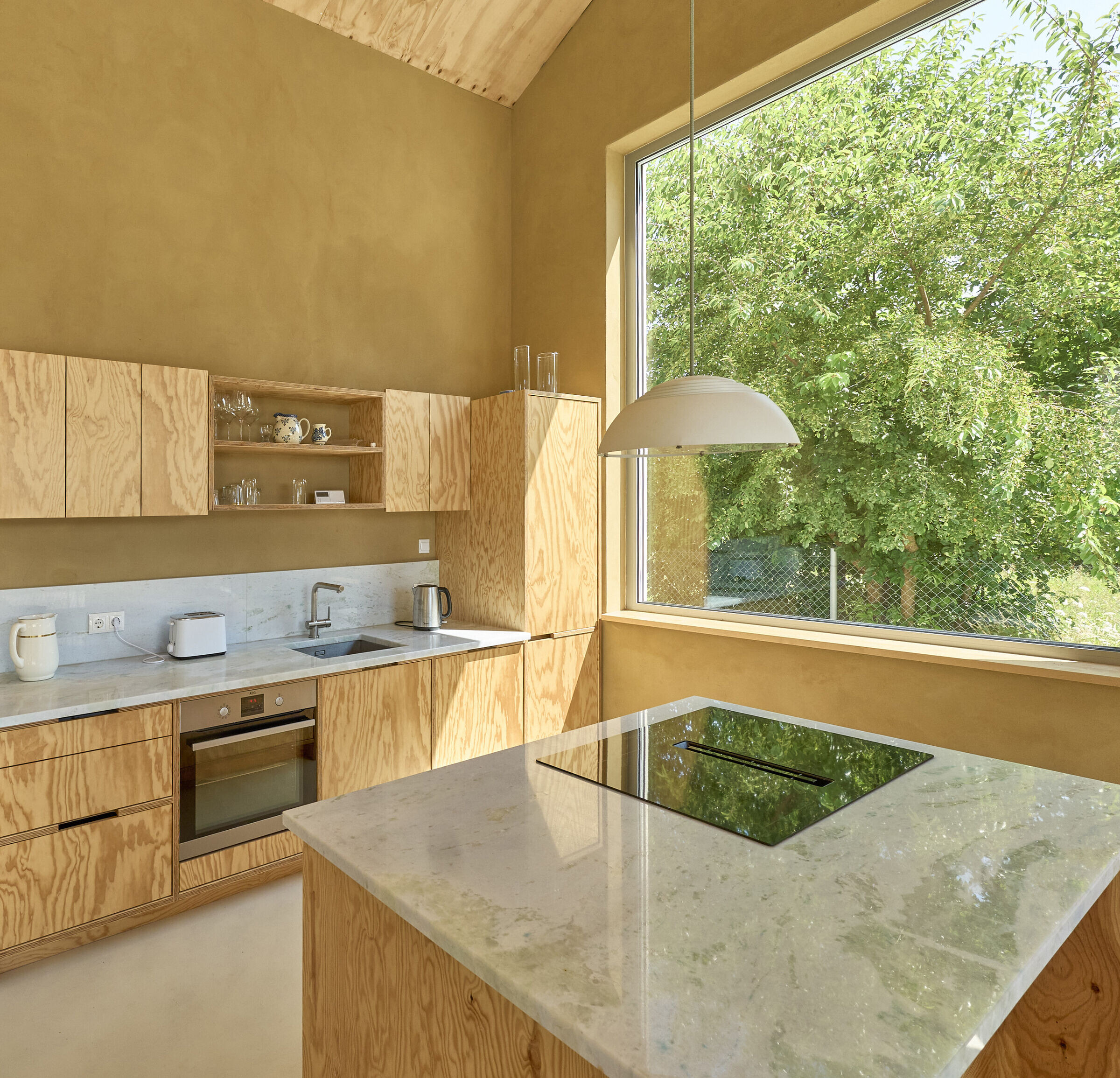

This frugal house is an example of a minimalist approach - in the sense of not doing unnecessary things and using the least amount of resources possible. This translates into the wall material used requiring no additional thermal insulation, the recycling of windows and doors, interior finishes requiring no painting, the use of natural materials like clay and plywood, the absence of mechanical ventilation, and the lack of solutions commonly considered minimalist - such as the more costly, labor-intensive and problematic in case of failure hidden gutters and downpipes. Here, the flow of rainwater is almost celebrated. Rainwater is flowing from roofs through downpipes into concrete fittings built into the terrace surface, with which it is discharged onto the lawn.
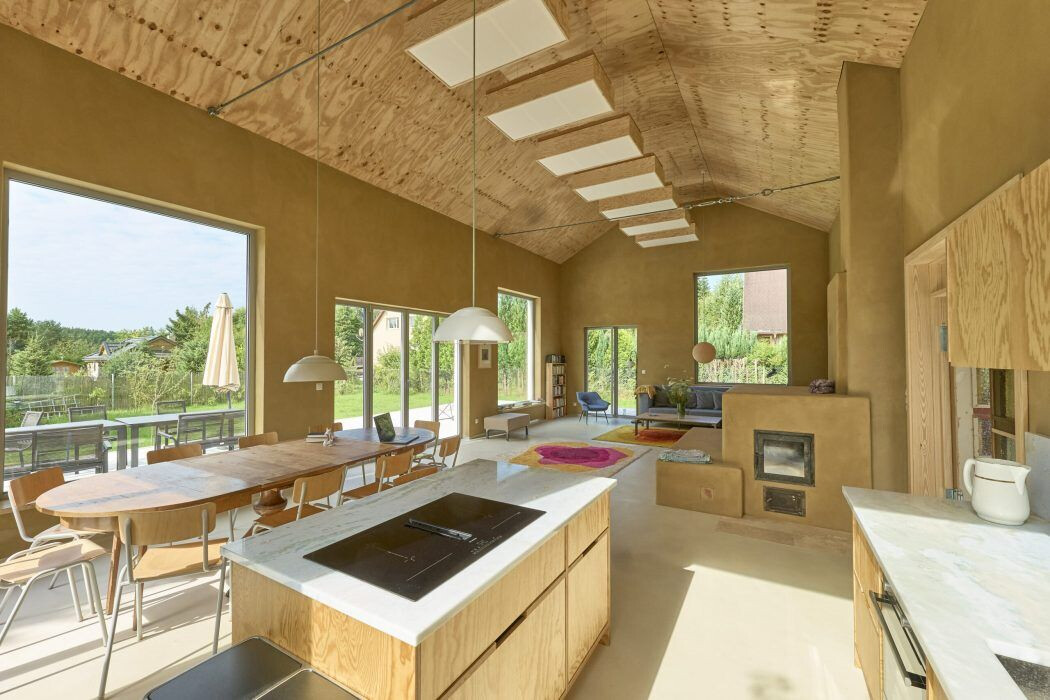
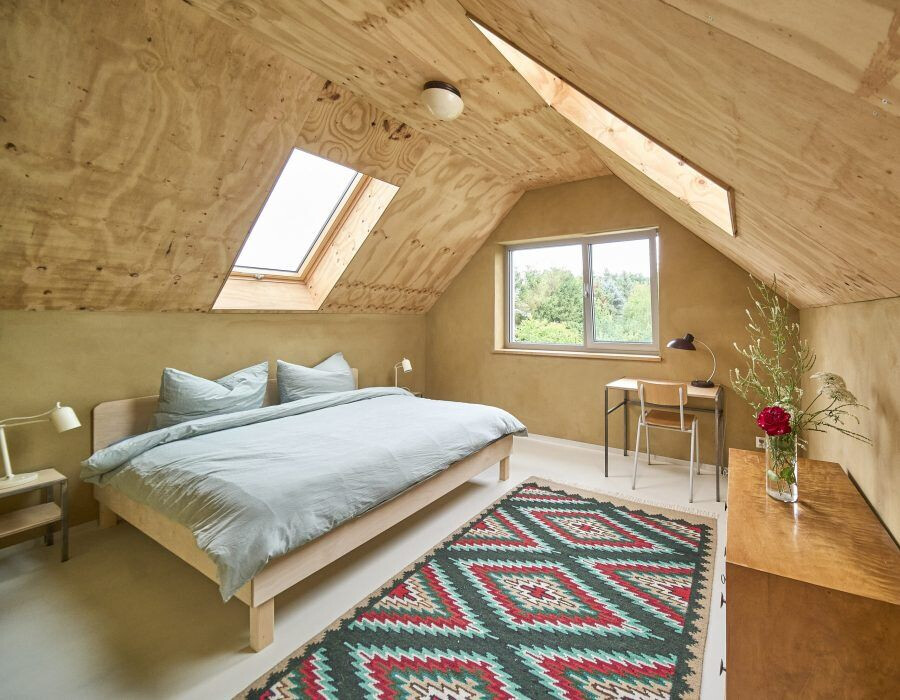
Technical information
Exterior masonry walls in Ytong EnergoPlus technology - wide blocks, which do not require additional thermal insulation. Roof in timber and steel structure (steel tie-beams in the living room), thermally insulated with wood wool, covered with trapezoidal sheet metal. Galvanized sheet metal guttering. Exterior cement-lime plaster, interior clay plaster. Plywood roof soffit in natural color. Aluminum windows and entrance doors (recycled aluminum). Wooden window sills. Micro-cement floors. Stair treads clad in oak wood. Steel balustrade. Natural ventilation in rooms which require ventilation.
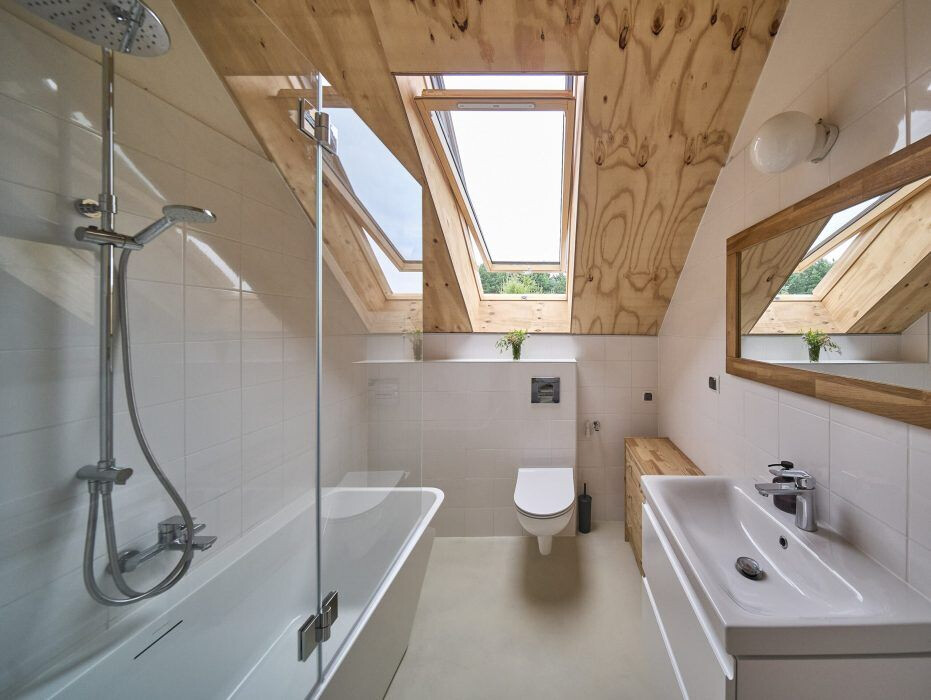
August 2024, T. Sachanowicz
Design: 2021-2022, construction: 2022-2024
Usable floor area: 200m2
Terrace area: 170m2
Plot area: 1000m2
Concept design: Tomasz Sachanowicz (s.lab architektura, Szczecin), Nanni Grau (Hütten und Paläste Architekten, Berlin), Frank Witte and Frauke Hildebrandt (clients);
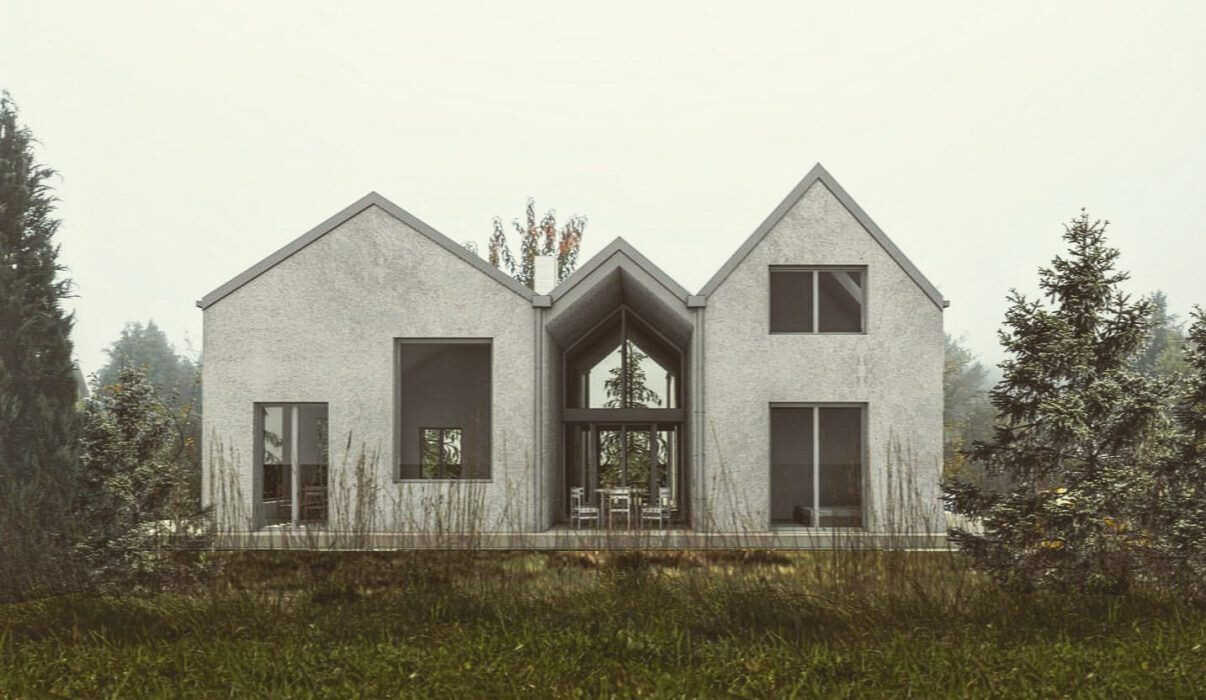
Planning permission documentation, construction drawings and detailed design: Tomasz Sachanowicz / s.lab architektura www.slabpracownia.pl
Technical documentation collaboration: structural engineer: Miroslaw Bartosiewicz, M&E engineers: Ewa Rybak, Patryk Dominiak. General contractor: Tomasz Zużewicz.
Photos: Stephan Falk and Tomasz Sachanowicz
www.slabpracownia.pl
www.instagram.com/s.lab_pracownia/
www.facebook.com/slab.architektura
